#open ocean
Text
Monterey Bay Aquarium Ctenophores
Hey! Sorry I've been absent - I did a fairly last minute 40-50 hour roundtrip drive to California the past week to go see family (and the @montereybayaquarium ctenophores). I've been wanting to go see the bloody belly comb jellies since the Into the Deep exhibit first opened and I was so excited to finally get down there. I'll be sharing more videos soon, just wanted to let people know I'm back <3
I tried to include at least a little clip of each cteno species they had on display but some came out better than others. I also think I missed getting a clip of Bolinopsis.
Video ID: no audio. A series of ctenophores, starting with the red heart shaped bloody belly comb jelly with flashing rainbow ctenes, with a closeup of the auricles and ctene rows. Another comb jelly, I think maybe Eurhamphea vexilligera, has long narrow auricles tucked into its body and big points near its aboral end. A long pink narrow Beroe abyssicola with a dark stomach swoops through the frame. Leucothea pulchra, the beautiful sea goddess comb jelly, swims in bright blue water. It is covered in golden finger-like protrusions. Another beautiful sea goddess waves its long auricles, and then a third splays its lobes while swimming. Many Homiphora swim and cast out their fishing tentacles. Finally we see a few more shots of the bloody belly comb jellies.
#ctenophore#comb jelly#monterey bay aquarium#aquarium#my marine biology videos#marine biology#marine life#sea creatures#ocean#my videos#marine invertebrates#deep ocean#open ocean
92 notes
·
View notes
Photo




Crowning the King Penguin
The second largest species of penguin in the world, the king penguin (Aptenodytes patagonicus) is found along the southern coasts of South America and Australia, as well as islands surrounding Antarctica. They thrive mainly along sparsely vegetated coasts and on the wide ice sheets that surround the Antarctic continent in the winter. They can endure temperatures of up to -10°C and swim in temperatures frequently below freezing.
The king penguin is among the largest penguins, about a meter at its tallest and weighing up to 18kg; generally females are slightly smaller than males. They look very similar to their larger relative the emperor penguin (Aptenodytes forsteri): both sport a dark grey or black head with yellow patches on the sides and throat, a dark back, and a white belly. However, the king penguin is more brightly coloured than the emporer penguin, and has a longer bill. Young penguins have an entirely brown coat, and only grow their adult feathers after several molts.
The primary food source for A. patagonicus are cephalopods and small fish, supplemented by krill and other marine invertebrates. Although they usually hunt in the upper water column for such prey, they regularly dive down to depths of over 200m. To find hunting grounds, king penguins can travel up to 500km from their colony. Year-round predators include fur seals, leopard seals and killer whales, and in the summer birds can snatch eggs and hatchlings.
Though king penguins have no formal social structure, they are highly social creatures. Groups of anywhere from a dozen to a hundred individuals travel together between seasons, hunt together, and frequently call to each other. Colonies themselves can easily number in the tens of thousands. King penguins also serially monogamous; they stay with one mate throughout a breeding season, and the next season both mates choose whether to return to their nest or search for a better mate. More often than not, pairs will stay together throughout multiple seasons, though king penguins do have lower rates of monogamy than other penguin species. King penguins also regularly exhibit homosexuality in the wild, with one study finding over a quarter of pairs in a colony were between same-sex individuals.
King penguins are one of only two species of penguin that do not build nests. At the beginning of the mating season, in spring, single males perform loud displays, throwing their head and wings back and puffing out their chests. The female chooses a mate, and the two perform a short dance, after which they molt together for a month. Shortly after, the female lays one egg. This eggs incubates for about 54 days, cared for and carried in a special pouch by both parents. and the ensuing chick is looked after and fed for another 14 to 16 months. During that time, parents take turns hunting for food at sea, and groups of chicks can form a crèche which is looked after by another, unrelated adult. At almost two years old, chicks become fully independent, though they do not mature sexually until 3-5 years of age. King penguins can live up to 25 years in the wild.
Conservation status: The IUCN has rated the king penguin as Least Concern. However, shrinking ice sheets have reduced feeding grounds and breeding colonies, and large reductions in the population are expected in the future.
Photos
Kimberly Kliska
Kerry Steinberner
Carl Henry
Tom Brakefield
#king penguin#Sphenisciformes#Spheniscidae#great penguins#penguins#birds#marine fauna#marine birds#islands#island birds#coasts#coastal birds#open ocean#open ocean birds#pelagic fauna#pelagic birds#antarctica#south america#southern south america#oceania#southern oceania#antarctic ocean#queer fauna#animal facts#biology#zoology
404 notes
·
View notes
Text
youtube
Three species of sea turtles nesting in southeast Florida face a range of manmade threats. Thanks to conservation measures, loggerhead and green sea turtles are recovering, but leatherbacks remain at risk. Researchers know little about this amazing species — and in the battle to save leatherbacks, knowledge is key.
Conservationists are out at dawn every morning, surveying and protecting the nests of all three species to keep them safe from human traffic and rescue any hatchlings stuck inside. Meanwhile, at Florida Atlantic University, a team monitors the health of juvenile green turtles who grow up along the coast, fitting them with ID tags to track their movements and progress.
Florida Atlantic University also has the only lab in the world where scientists study leatherbacks as hatchlings. Unlike the other two species that hug the coast for several years, leatherbacks head right for the open ocean, so FAU scientists are pioneering new ways to learn about the 20-30 years they spend at sea before returning to the beach to nest. Using new, miniaturized satellite tags, they’re hoping to reveal the mysteries of the leatherbacks’ so-called “lost years.”
Learn more about this story and ways that YOU can get involved in saving your local biodiversity by becoming a Wild Hoper:
Follow us:
/ wildhopetv
Join our community: https://wildhope.tv
Get our newsletter: http://eepurl.com/irGMng
Share this with a friend!
#nature on pbs#wild hope#solarpunk#tidalpunk#sea turtle#sea#ocean#sea life#marine life#USA#florida#cost#costal#loggerhead#green sea turtle#leatherback turtle#conservation#open ocean#Florida Atlantic University#Youtube
4 notes
·
View notes
Text
My second fic for Hermit Horror Week! This time what should have been a fun adventure for some of the Hermits, ends with Gem all by herself. Like the final girl in a horror movie.
Written for the day 2 prompt: Environment
#hermithorrorweek2023#geminitay#drowning#open ocean#isolation#I decided to bully Gem today#this was written for the prompt environment
5 notes
·
View notes
Text
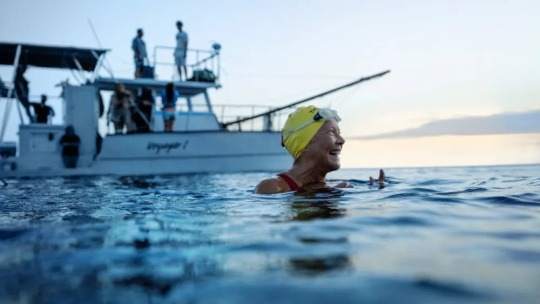


Now Watching:
Nyad (2023)
“The remarkable true story of athlete Diana Nyad who, at the age of 60 and with the help of her best friend and coach, commits to achieving her life-long dream: a 110-mile open ocean swim from Cuba to Florida”
4 notes
·
View notes
Text
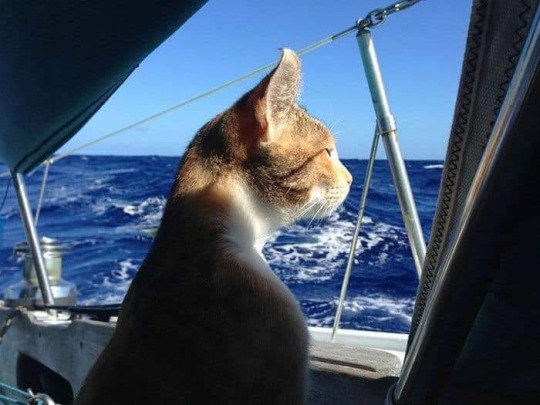
4 notes
·
View notes
Text
Seafaring
On the open sea, truly it is wide open—the land loses the battle to the horizon, and there can be nothing more than what you’ve taken with you; freed from the chatter of quicksilver desires.
Out here with no appointments, no prisoner to our moods. We are magic, in the half-calm between broken waves, we are so tired we sleep as we lie awake, cutting through a sun-spotted mirror to the clouds, we are disassembled. Not broken like the waves by the bow, but disintegrated, leaving behind a spray of images we had thought that we wanted, while the parts of us we need are put back together.
Not even birds fly out this far. But we do. We fly as the time does and yet it creeps, each second fuller than the last, and the kiss of salt is a message from a planet that’s made of water, and we are fluid too, letting go of gratification and I’ll-be-happy-when. We slide down the surface of ourselves, putting trust in the wind and the captain to bring us home.
#prose poem#spilled thoughts#writerscreed#open sea#sailing#ocean#open ocean#waves#creative writing#self reflection#travel writing
23 notes
·
View notes
Photo
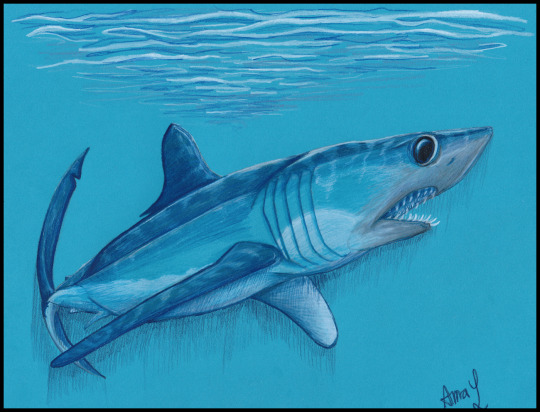
Longfin Mako Shark (Isurus paucus) in colored pencil on cardstock. I just love the way this came out - much less effort for a big “blue ocean” effect.
// Follow me on Facebook //
#longfin mako shark#shark#mako shark#animals#art#ocean#open ocean#fish#marine life#sea life#Ama's Nature Art
20 notes
·
View notes
Text
He had a sense of vastly greater space around him.
"Icebound" - Dean Koontz
4 notes
·
View notes
Video
The first time I saw the open Atlantic was at the Farolim de Felgueiras, Porto.

2 notes
·
View notes
Video
youtube
Open Ocean - Say It Right
0 notes
Text
I finally finished publishing my webtoon, its a pretty short read but a sincere and sweet one 🐠🏢🫧
https://www.webtoons.com/en/canvas/the-future-is-blue/list?title_no=884904 #WEBTOON - ๑˖﹒⊹˙🌧️
its a story set in the future mainly focsed around two sisters, rea and rose, and their individual lives and problems.
\ ₍⸍⸌̣ʷ̣̫⸍̣⸌₎♡
┏━∪━∪━━━┓

0 notes
Photo
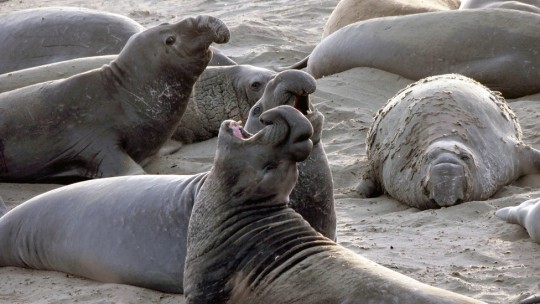

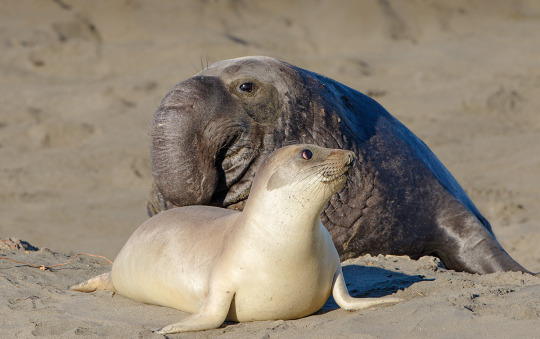
Elevating the Elephant Seal
Found all along the Pacific coast, from Alaska to Antarctica, elephant seals are famous for their size, aggression, and unusual noses. There are two species of elephant seal, both belonging to the true seal family Phocidae. The northern elephant seal (Mirounga angustirostris), as its name suggests, is dispersed along the northern coasts of North America, from the American state of Alaska all the way down to Baja California in Mexico. Southern elephant seals (Mirounga leonina) reside in Antarctic and sub-Antarctic waters up to the southern most regions of Chile and Argentina in South America. Both species migrate twice a year. The rest of the year is spent foraging in the deep waters of the Arctic or Antarctic, respectively, and these trips can take anywhere from 10,000km to 20,000, making them one of the longest migrations of any marine mammal.
The main difference between northern and southern elephant seals is their size. A male northern elephant can weigh between 1,500 and 2,300kg, while females are much smaller at 400 to 900 kg. M. angustirostris also has a shorter nose than its southern cousin. M. leonina females are similar in size to the northern elephant seals, at 400 to 900 kg, but males can easily reach up to 4,000kg, making them the largest species of seal on the planet. Both elephant seal species are generally brown in color and have only a short, bristly coat of hair. They have no ears, distinguishing them from other pinnipids like sea lions. The males, or bulls, of both species also have pronounced nose called a proboscis which serves to amplify loud mating or threatening calls.
Elephant seals come ashore twice a year in groups called colonies. In the summer, individuals gather on land to go through a ‘catestrophic molt’. During this time, the fur and the top layer of skin peel from the body. This is a necessary process because when at sea, blood is not circulated to the skin in order to keep elephant seals warm. Because of this, they are also unable to grow new hair or skin continuously. When the outer layers of skin and hair wear down or become ragged, individuals travel to traditional breeding grounds and take a month to shed their outer layers and grow a new protective coat.
From December to March, dominant males congregate at breeding grounds to compete for mating rights. The bulls are very aggressive, and fight by slamming their bodies together and raking each other with their sharp canines. Once a bull has established dominance on a beach, other males typically leave, though some may try to sneak back in to mate when the alpha bull isn’t looking. Each dominant male controls a harem of 40 to 50 females. Each female, or cow, only gives birth to one or two pups after a gestation period of 10 to 12 months. Only a few days after giving birth, she is ready to mate again.
In the meantime, the mother nurses her pup almost constantly for about a month. During this time, the female does not leave the beach to search for food, and both she and the bulls lose up to a third of their body weight. After about a month the mother weans her pup off her milk. However, some pups are “super weaners” and will search out another female-- usually one who has lost her pup-- and nurse from her for as long as possible. This gives the pup a significant size advantage: pups that are successfully weaned at 6 weeks weigh only 160kg, while super weaners can weigh up to 270 kg. The advantage of being this big is in the blubber: elephant seals require large amounts of excess fat as an energy source when food is scarce and to keep them warm when they forage in the cold waters of the northern or southern Pacific Ocean. However, the effectiveness of this strategy for survival has yet to be fully determined. The average lifespan of M. angustirostris is 9 years, while M. leonina can live up to 21 years old, though in both species males tend to die much sooner than females.
Outside the molting and mating seasons, elephant seals spend up to 90% of their lives in the water, usually alone. Foraging migrations require long, deep dives into the cold Arctic or Antarctic oceans to search for squid, rays, small sharks, and schooling fish. Some of these dives are the deepest recorded for any non-cetacean mammal at up to 1,550m below the surface. To reach these depths, elephant seals can hold their breath for almost two hours, although the average length of a dive is 20-60 minutes. Due to their large size, adult elephant seals have few predators. Some sharks, like great white sharks (Carcharodon carcharias) and southern sleeper sharks (Somniosus antarcticus) will go after adults when desperate. More common is predation on elephant seal pups; killer whales (Orcinus orca), leopard seals (Hydrurga leptonyx), and New Zealand sea lions (Phocarctos hookeri) will all hunt young pups when no parents are nearby to defend them.
Conservation status: The IUCN has rated both elephant seal species as Least Concern. In the late 1800s, northern elephant seals were thought to be hunted to extinction but a population of 20-100 individuals was discovered on Guadalupe Island off Baja California. Southern elephant seals were also hunted, but to a lesser extent. M. angustirostris and M. leonina populations are now well in the hundreds of thousands, though the population of southern elephant seals is declining once more due to disruption of their primary food sources.
Photos
Taiki Adachi
Nick Ut
Steve Zamek
If you like what I do, consider buying me a ko-fi!
#northern elephant seal#southern elephant seal#carnivora#phocidae#elephant seals#seals#pinnipeds#carnivores#mammals#coasts#coastal mammals#open ocean#open ocean mammals#pelagic fauna#pelagic mammals#north america#western north america#south america#western south america#antarctica#pacific ocean
79 notes
·
View notes
Text
“Ares…is a moron.”
I honestly don’t think that anyone is more amused by the whole “this douchebag decided to try and fight the child of the sea god on a fucking beach” of it all than Poseidon.
#not even in a ‘how dare you try to kill my son!’ kind of way#but in a ‘how genuinely dense are you? this is why we needed another war deity’#will be brought up at every family dinner for millennia afterwards#every time ares tries to make a point from then on ‘you fought a son of poseidon by OPEN OCEAN YOU DON’T GET AN OPINION’#pjo tv show#pjo#percy jackon and the olympians#poseidon#poseidad#ares pjo#ares#percy jackson
18K notes
·
View notes
Text
youtube
0 notes